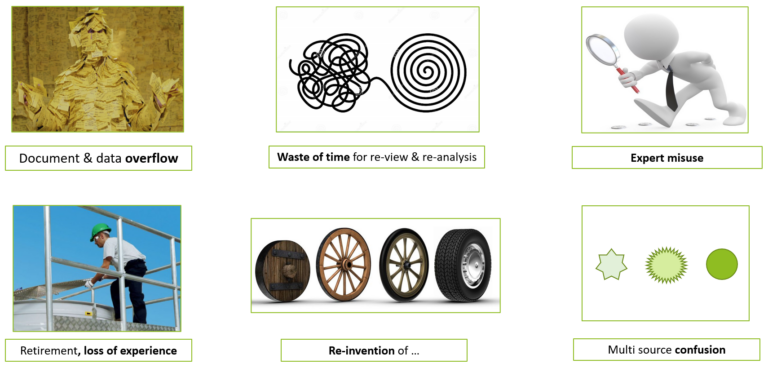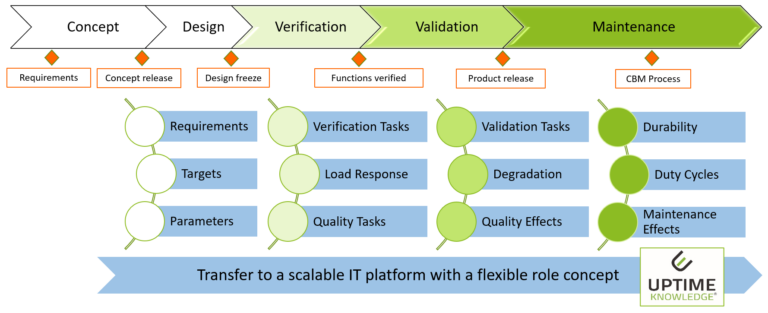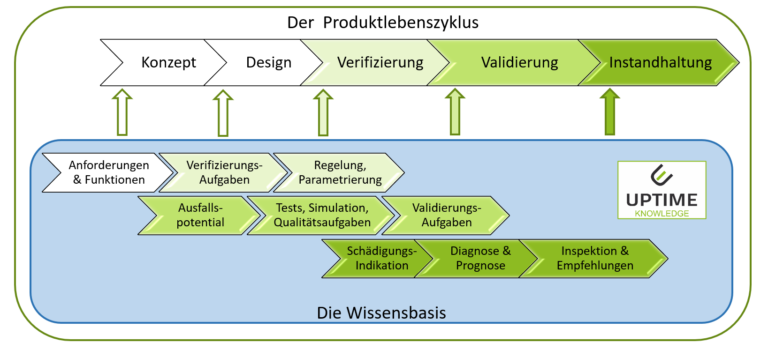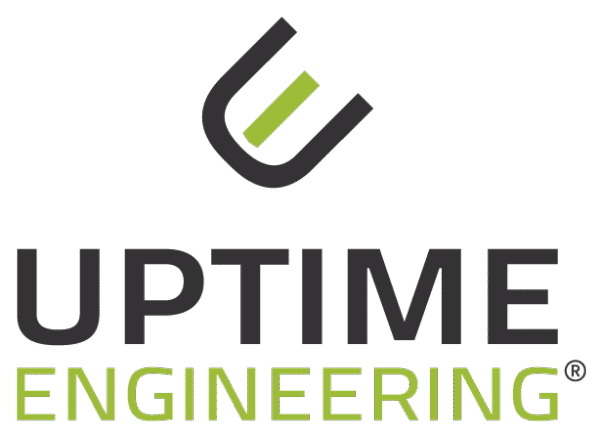
The knowledge of developers and maintenance technicians is the decisive competitive factor, especially for high-tech companies and fleet operators. Knowledge, as a resource is primarily found in the minds of experts. It is not generally available for an organization. Therefore, organizations learn more slowly than humans.
Organizations need a tool that supports the maintenance and systematic application of knowledge without much effort. This tool is the knowledge base Uptime Knowledge™. It grows with the expert knowledge, maintains it and makes it usable for a wide range of tasks in the product life cycle.

The generally increasing functional density of technical systems results in a flood of information. The growing volume of documents and data cannot be dealt with by a filing system or PDM alone. In practice, even PLM tools do not prevent questions from being analyzed over and over again and experts from wasting their working time searching for technical content.
Employees confuse each other by using the same terms for not quite the same thing, or they keep reinventing the proverbial wheel. Experiences are rarely shared between disciplines, departments, and locations. With the retirement or change of employees, their implicit knowledge also migrates. The organizations are losing value.

User knowledge is valuable. It is created by working on specific tasks in the product life cycle, such as testing and simulation, risk and damage analyses, maintenance. Much of it becomes reusable when it is collected in a structured way in a knowledge base. The relevant content is already available in an applicable form in various software tools such as FRACAS or failure potential analysis. This practical experience can therefore be automatically transferred to a generic knowledge base. This creates and grows the common basis for the maintenance and use of an organization’s knowledge. This prevents loss and waste with little additional effort. Uptime KNOWLEDGE® is the software tool for this structured knowledge base.

Uptime KNOWLEDGE™ stores user knowledge about mechatronic components and functional groups. When this knowledge base is jointly maintained within an organization, a broad, steadily growing body of knowledge is created. The content can be reused across departments in the product life cycle: the reference values for condition-based maintenance are already determined during function development; the measurement technique for predictive maintenance results from validation; the risk-focused plant monitoring is designed from the results of the simulation.
Interfaces in an organisation – the most efficient sinks for expert knowledge – are elegantly neutralized with the knowledge base. New requirements in the context of agile development or condition-based maintenance (CBM, PDM) are also very well supported.

Uptime KNOWLEDGE™ supports the essential processes in the entire product life cycle with information on the respective tasks: e.g. the development program of a technical system is largely derived from the component hierarchy. Analogously, the diagnostic requirements for condition-based maintenance are essentially already defined with the function groups. Depending on the task, this content is made available to the user as different views or exported to various software tools.
Applying Uptime KNOWLEDGE™ across an organization, in different locations, and for different purposes is also a method of quality assurance and standardization. The flow of information back into the knowledge base contributes to continuous improvement.
Finally, gaps also become transparent in the knowledge base, in the form of concrete tasks that cannot be completed. Thus, Uptime KNOWLEDGE™ can also be used as a requirements tool for method innovation.



You are currently viewing a placeholder content from Facebook. To access the actual content, click the button below. Please note that doing so will share data with third-party providers.
More Information